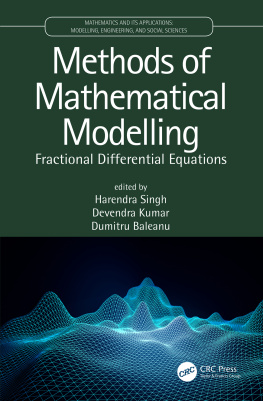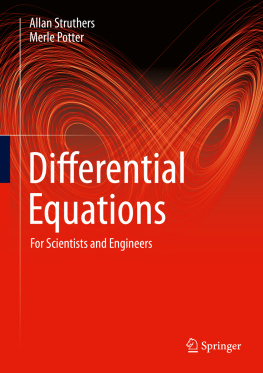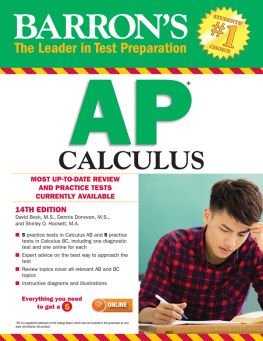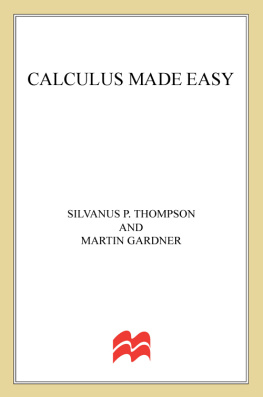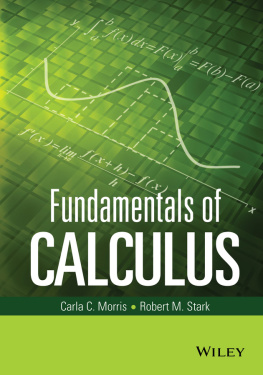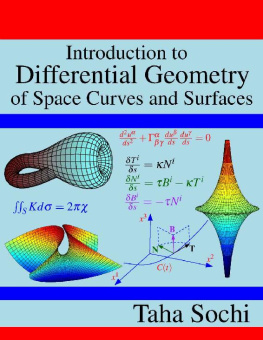Copyright 2012 by John Wiley & Sons. All rights reserved
Published by John Wiley & Sons, Inc., Hoboken, New Jersey
Published simultaneously in Canada
No part of this publication may be reproduced, stored in a retrieval system, or transmitted in any form or by any means, electronic, mechanical, photocopying, recording, scanning, or otherwise, except as permitted under Section 107 or 108 of the 1976 United States Copyright Act, without either the prior written permission of the Publisher, or authorization through payment of the appropriate per-copy fee to the Copyright Clearance Center, Inc., 222 Rosewood Drive, Danvers, MA 01923, (978) 750-8400, fax (978) 750-4470, or on the web at www.copyright.com . Requests to the Publisher for permission should be addressed to the Permissions Department, John Wiley & Sons, Inc., 111 River Street, Hoboken, NJ 07030, (201) 748-6011, fax (201) 748-6008, or online at http://www.wiley.com/go/permission .
Limit of Liability/Disclaimer of Warranty: While the publisher and author have used their best efforts in preparing this book, they make no representations or warranties with respect to the accuracy or completeness of the contents of this book and specifically disclaim any implied warranties of merchantability or fitness for a particular purpose. No warranty may be created or extended by sales representatives or written sales materials. The advice and strategies contained herein may not be suitable for your situation. You should consult with a professional where appropriate. Neither the publisher nor author shall be liable for any loss of profit or any other commercial damages, including but not limited to special, incidental, consequential, or other damages.
For general information on our other products and services or for technical support, please contact our Customer Care Department within the United States at (800) 762-2974, outside the United States at (317) 572-3993 or fax (317) 572-4002.
Wiley also publishes its books in a variety of electronic formats. Some content that appears in print may not be available in electronic formats. For more information about Wiley products, visit our web site at www.wiley.com .
Library of Congress Cataloging-in-Publication Data:
Introduction to differential calculus: systematic studies with engineering applications for beginners / Ulrich L. Rohde... [et al.]. 1st ed.
p. cm.
Includes bibliographical references and index.
ISBN 978-1-118-11775-0 (hardback)
1. Differential calculusTextbooks. I. Rohde, Ulrich L.
QA304.I59 2012
513.33dc232011018421
Foreword
What is Calculus? is a classic deep question. Calculus is the most powerful branch of mathematics, which revolves around calculations involving varying quantities. It provides a system of rules to calculate quantities, which cannot be calculated by applying any other branch of mathematics. Schools or colleges find it difficult to motivate students to learn this subject, while those who do take the course find it very mechanical. Many a times, it has been observed that students incorrectly solve real-life problems by applying Calculus. They may not be capable to understand or admit their shortcomings in terms of basic understanding of fundamental concepts! The study of Calculus is one of the most powerful intellectual achievements of the human brain. One important goal of this manuscript is to give beginner-level students an appreciation of the beauty of Calculus. Whether taught in a traditional lecture format or in the lab with individual or group learning, Calculus needs focusing on numerical and graphical experimentation. This means that the ideas and techniques have to be presented clearly and accurately in an articulated manner.
The ideas related with the development of Calculus appear throughout mathematical history, spanning over more than 2000 years. However, the credit of its invention goes to the mathematicians of the seventeenth century (in particular, to Newton and Leibniz) and continues up to the nineteenth century, when French mathematician Augustin-Louis Cauchy (17891857) gave the definition of the limit, a concept which removed doubts about the soundness of Calculus, and made it free from all confusion. The history of controversy about Calculus is most illuminating as to the growth of mathematics. The soundness of Calculus was doubted by the greatest mathematicians of the eighteenth century, yet, it was not only applied freely but great developments like differential equations, differential geometry, and so on were achieved. Calculus, which is the outcome of an intellectual struggle for such a long period of time, has proved to be the most beautiful intellectual achievement of the human mind.
There are certain problems in mathematics, mechanics, physics, and many other branches of science, which cannot be solved by ordinary methods of geometry or algebra alone . To solve these problems, we have to use a new branch of mathematics, known as Calculus . It uses not only the ideas and methods from arithmetic, geometry, algebra, coordinate geometry, trigonometry, and so on, but also the notion of limit , which is a new idea which, lies at the foundation of Calculus . Using this notion as a tool, the derivative of a function (which is a variable quantity) is defined as the limit of a particular kind.
In general, Differential Calculus provides a method for calculating the rate of change of the value of the variable quantity. On the other hand, Integral Calculus provides methods for calculating the total effect of such changes, under the given conditions. The phrase rate of change mentioned above stands for the actual rate of change of a variable, and not its average rate of change . The phrase rate of change might look like a foreign language to beginners, but concepts like rate of change, stationary point , and root , and so on, have precise mathematical meaning, agreed-upon all over the world. Understanding such words helps a lot in understanding the mathematics they convey. At this stage, it must also be made clear that whereas algebra, geometry, and trigonometry are the tools which are used in the study of Calculus, they should not be confused with the subject of Calculus.
This manuscript is the result of joint efforts by Prof. Ulrich L. Rohde, Mr. G. C. Jain, Dr. Ajay K. Poddar, and myself. All of us are aware of the practical difficulties of the students face while learning Calculus. I am of the opinion that with the availability of these notes, students should be able to learn the subject easily and enjoy its beauty and power. In fact, for want of such simple and systematic work, most students are learning the subject as a set of rules and formulas, which is really unfortunate. I wish to discourage this trend.
Professor Ulrich L. Rohde, Faculty of Mechanical, Electrical, and Industrial Engineering (RF and Microwave Circuit Design & Techniques) Brandenburg University of Technology, Cottbus, Germany has optimized this book by expanding it, adding useful applications, and adapting it for today's needs. Parts of the mathematical approach from the Rohde, Poddar, and Beck textbook on wireless oscillators ( The Design of Modern Microwave Oscillators for Wireless Applications: Theory and Optimization , John Wiley & Sons, ISBN 0-471-72342-8, 2005) were used as they combine differentiation and integration to calculate the damped and starting oscillation condition using simple differential equations. This is a good transition for more challenging tasks for scientific studies with engineering applications for beginners who find difficulties in understanding the problem-solving power of Calculus.
Mr. Jain is not an educator by profession, but his curiosity to go to the roots of the subject to prepare the so-called concept-oriented notes for systematic studies in Calculus is his contribution toward creating interest among students for learning mathematics in general, and Calculus in particular. This book started with these concept-oriented notes prepared for teaching students to face real-life engineering problems. Most of the material pertaining to this manuscript on calculus was prepared by Mr. G. C. Jain in the process of teaching his kids and helping other students who needed help in learning the subject. Later on, his friends (including me) realized the beauty of his compilation and we wanted to see his useful work published.


